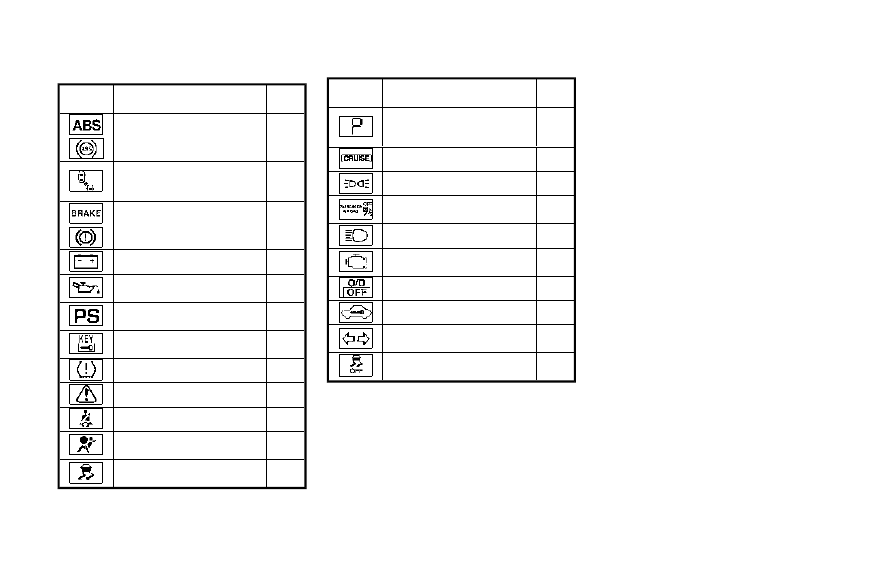Nissan Quest (2017 year). Instruction - part 2

0-10
Illustrated table of contents
Warning
light
Name
Page
Anti-lock Braking System
(ABS) warning light
2-12
Blind Spot Warning (BSW)
system warning light (if so
equipped)
2-12
Brake warning light
2-12
Charge warning light
2-13
Engine oil pressure warning
light
2-13
Hydraulic pump electric power
steering warning light
2-13
Intelligent Key system warning
light
2-14
Low tire pressure warning light
2-14
Master warning light
2-15
Seat belt warning light
2-15
Supplemental air bag warning
light
2-15
Vehicle Dynamic Control (VDC)
warning light
2-16
Indicator
light
Name
Page
Continuously Variable Trans-
mission (CVT) position indicator
light
2-16
Cruise indicator light
2-16
Exterior light indicator
2-17
Front passenger air bag status
light
2-17
High beam indicator light
2-17
Malfunction Indicator Light
(MIL)
2-17
Overdrive off indicator light
2-18
Security indicator light
2-18
Turn signal/hazard indicator
lights
2-18
Vehicle Dynamic Control (VDC)
off indicator light
2-18
WARNING AND INDICATOR LIGHTS